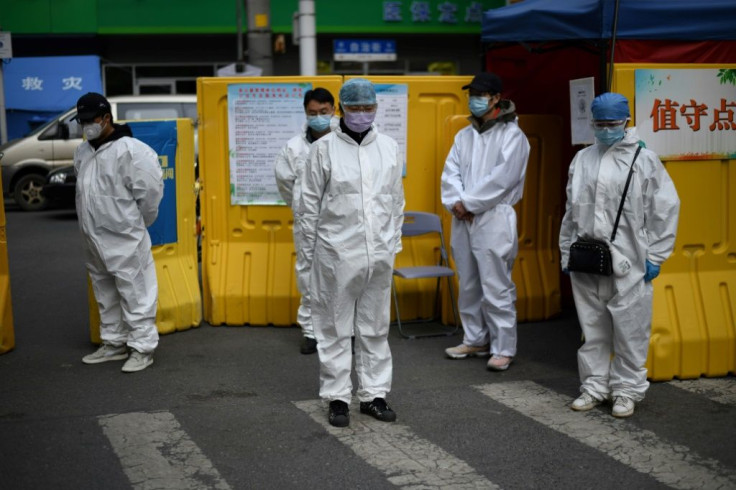China Exports, Jobs Take Massive Hit As Coronavirus Chokes Off Global Demand

KEY POINTS
- Beijing's apparent victory over the virus could soon turn sour as jobless numbers rise
- Further economic crisis may expose systemic problems of Chinese economy like high debt
- Last year saw the country hit 6.1% growth that was the lowest in more than a decade
China’s relief over controlling the coronavirus is giving way to another round of economic pain as plummeting global demand is threatening supply chains. The country’s ports and shipping that had taken the brunt of the coronavirus lockdown were revving up when the global spread of the germ caused a wider disruption.
As more countries go into lockdown hitting global logistics, the recovering Chinese manufacturing could slow, making more jobs redundant, reports say. This would mean further pain for a country where a significant segment of the country’s 775 million-strong workforce is already struggling to recover from massive job losses.
Overwhelmed healthcare systems
China’s COVID-19 hotspots have reopened with some workers allowed to return to the jobs, as the disease seems to be under control. But reports suggest the job losses from the novel coronavirus outbreak, which afflicted nearly 82,000 Chinese and killed 3,331 people since November last year, may have been much worse than acknowledged. The West has accused the Communist government of President Xi Jinping of failing to be transparent about the extent and mortality of the outbreak.
With virus outbreaks overwhelming the healthcare systems and shutting logistics channels in major global economies, the demand for Chinese products is set to plunge, a Reuters report said. “We expect the near-term impact on trade growth in coming quarters likely to be the worst ever, as economies stall and external demand faces imminent collapse on large scale quarantine measures across major economies,” the report quotes Rahul Kapoor, vice president at IHS Markit, as saying.

China’s container transit volumes fell 10.6% in January and February compared to a year before, while exports plummeted 17.2%. Even though March has witnessed some rebound in trade volumes, exporters fear a steep slump as the world battles the novel coronavirus. The virus, which was first reported from a wet market in China’s industrial hub of Wuhan in Hubei province, has reached more than 180 countries, infecting 1.27 million people and taking 69,487 lives so far. The U.S. has seen the worst extent of infection at 336,912, while Italy has suffered the most deaths at 15,887.
A prolonged global lockdown could worsen many of China’s systemic problems, according to a report in the South China Morning Post.
Soaring debt burden
The Chinese economy had entered a trough, with the growth rate falling to 6.1% after years of breathtaking growth that also pushed up the debt. The outbreak could not have occurred at a worse time, the report says. The past saw the economy’s debt burden soar causing a gradual structural slowdown. At the point when the country could have begun spending more to prop up the growth rate, the pandemic struck, said the report.
The Chinese Ministry of Finance reported that fiscal revenue plunged 9.9% in the January-February period, the worst drop since 2009. Tax revenue fell 11.2%, driven by a 19% drop in value-added tax (VAT) revenue, which is the main source of fiscal income. The country’s internal woes could only worsen with the pandemic racing through the rest of the world.

Meanwhile, the mounting joblessness could also add to China’s problems, another Post report suggests. The country’s inherent lack of reliable jobs data could worsen the problem, it said. The official data issued by the National Bureau of Statistics (NBS) showed that unemployment jumped to an all-time high of 6.2% in January and February combined, up from 5.2% in December. This meant an additional 5 million people are without work.
Migrant labor
The report says that the official indicator underestimates the real jobless picture as it excludes the hundreds of thousands of migrant workers who could not return to work because of the travel restrictions. Unofficial estimates show as many of 200 million people may have joined the country’s jobless because of the coronavirus shutdown. Liu Chenjie, the chief economist at fund manager Upright Asset, calls it “frictional unemployment,” where they want to work but cannot or are unable to go back to work, the report says. That would mean a quarter of the country’s 775 million-strong workforce is struggling to find appropriate work.
© Copyright IBTimes 2025. All rights reserved.





















